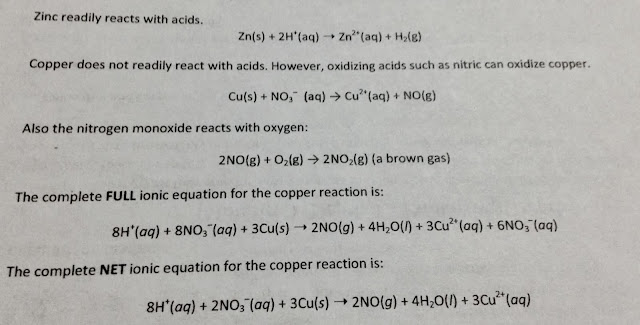Overall the average score for the multiple choice was 83.9% and the spread of scores looked like this:
Overall the average score for the free response was 88.3% and the spread of the scores looked like this:
I didn't do so great on the free response. This could have been because I didn't review the task chains the night before. It could also be that I didn't understand how to explain all of the concepts correctly and I should have asked more questions about this before the testing day.
On Wednesday it was 10/23 which is mole day. We ate mole cookies and drank hot chocolate to celebrate the most important number in chemistry, Avogadro's Number 6.02 x 10 ^23. We also listened to a song about moles and mole day and were told some mole play-on words and puns.

Here is a parody of "Call Me Maybe" by Carly Rae Jepsen its called "Mole Day Baby". I've got to give these chemistry teachers some props they were pretty cool in this video!
On Wednesday we were also introduced to hydrogen bonding through an article from the magazine Chem Matters. This article talked about paint ball and how hydrogen bonds are used in the paint that is used in paintball because it makes it washable. From this article we learned that hydrogen bonds form in atoms that have a large difference in electronegativity with hydrogen. The central atoms of these molecules have lone pairs of electrons that can attract other the hydrogens of other molecules. This forms a hydrogen bond which is the strongest intermolecular force. These bonds are usually formed with Oxygen, Fluorine, or Nitrogen and Hydrogen. In order to practice our science writing skills we wrote essays about this article and how it related to the rest of chemistry. This was helpful in two ways. First it helped me to practice my writing about science topics and it also made sure that I understood the reading and the concept of hydrogen bonding.
At the end of the week we started to move away from covalent compounds and bonding and into ionic compounds and bonding. We started a POGIL on ionic bonds on Thursday and finished it up in class on Friday. We reviewed that metals form cations and nonmetals form anions. Cations are positively charged because they lose electrons to be more like the closest noble gas. They are smaller than a neutral atom of the same element because they lose their outer valance shell of electrons. Anions on the other had are negatively charged because it is easier for these atoms to gain electrons to have the same number of valance electrons as the nearest noble gas. These ions are larger than a neutral atom of the same element. This is because the electrons have more repulsion away from each other and this makes the ion larger.
Overall this week I think I learned a lot. I learned that I need to prepare for the tests differently. I'm going to talk to my friends who did better and see what kinds of strategies they used for studying for the test.
I also reviewed the material about ionic bonding that was covered last year and during the summer. I think that I would give my understanding of the material a 9/10. I think because we learned about ionic bonding last year I understand it well. I gave a 9 and not a 10 because we still have things to learn about metals in order to understand ionic bonding.


















































